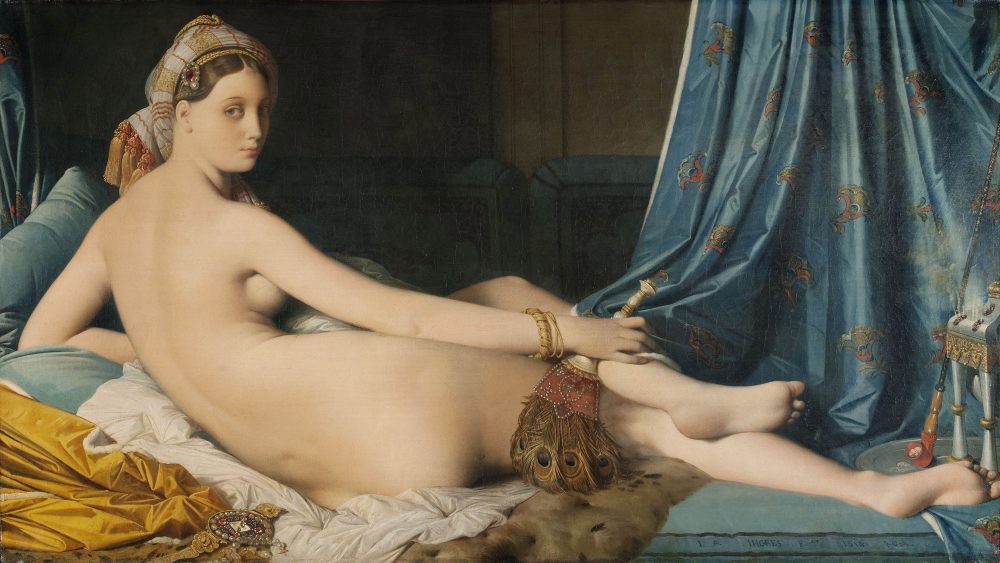Jean-Auguste-Dominique Ingres
Fundamental Paintings to Understand the History of Painting
We could make this publication thanks to small donations. How is 3 minutos de arte supported?
Grande Odalisque (1814). Jean-Auguste-Dominique Ingres
Oil on canvas. 91 cm x 162 cm
Musée du Louvre. Paris, France
Ingres was Jacques-Louis David’s student and both were the most important painters of Neoclassicism.
He had a solid neoclassical formation, as a result of David’s teachings and his admiration for Raphael. We can observe here how the face of the odalisque seems to be painted by Raphael. It is considered to be a homage to the Madonna of the Chair.
Formally, he was neoclassical, but his spirit was more romantic. That is why lovers of each movement love him and reject him at the same time.
He tried many genres, and it is very interesting what he achieved with the nude.
Neoclassicism followed the classical tradition as regards nude: gods and heroes are nude, usually male nudes where the anatomical beauty is not covered with clothes because it reflects virtue. Ingres learnt all this, but he was interested in the female nude and its sensuality, its erotic charge, its invitation to pleasure. And finally he dared to show it without excuses without a context justifying nudity as a scene form a Biblical story would be.
His nudes are considered to be the first ones of the modern tradition, since they do not represent historical, biblical or mythological scenes.
More important that the rupture with tradition and those first nudes full of eroticism is the fact that his protagonists are not anatomically perfect. Ingres distorted them with an aesthetical purpose (a resource already used in Mannerism with greater subtlety). The artist softened the bones so as extremities were more curved and sensual. He slenderized the necks to achieve elegance and delicacy.
The back of the odalisque is extremely long, as if Ingres had superposed different backs (as if he had disassembled and composed the body to his liking). He achieved an effect making that back seductive, delicious, stunning.
Ingres was criticized due to this treatment of anatomy. He was considered an eccentric. Nevertheless, a century later a young man named Pablo Picasso was inspired in that resource to “revolutionize” the way of representing the human body.
Recommended links:
Fundamental Painters of Neoclassicism.
Stories behind Works of Art: The Consecration of the Emperor Napoleon, Jacques-Louis David.
Fundamental Paintings to Understand the History of Painting: The Raft of the Medusa, Géricault.
Stories Behind Works of Art: Lady with an Ermine, Leonardo da Vinci.
Stories Behind Works of Art: The Birth of Venus, Sandro Botticelli.
You can also find more material using the search engine.




0 Comments